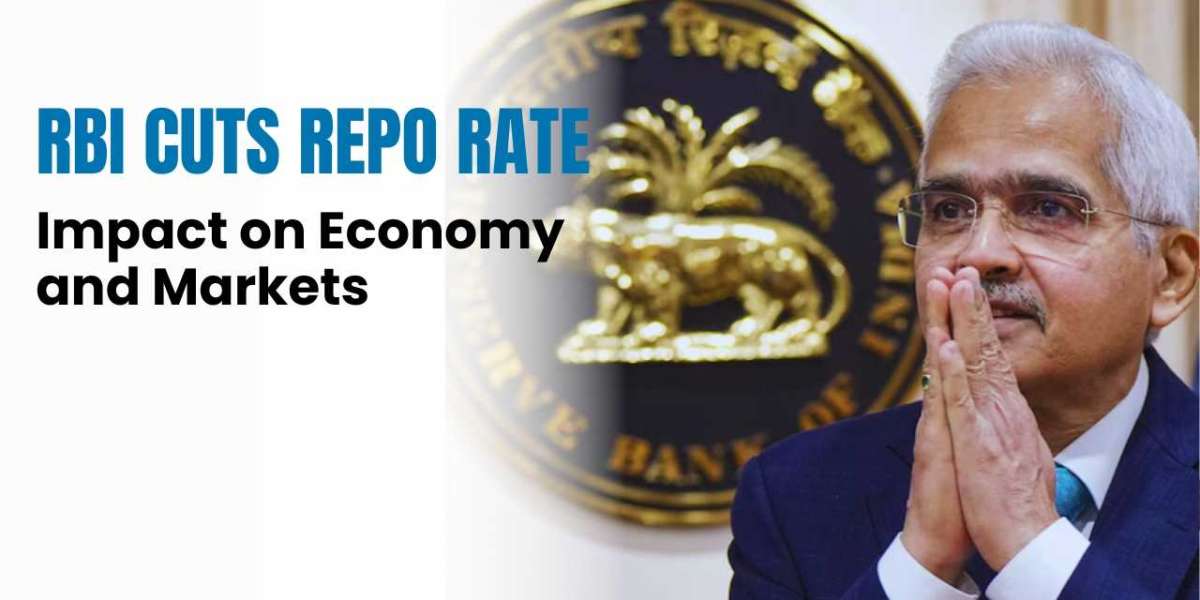RBI Cuts Repo Rate: Impact on Economy and Markets
Today, the Reserve Bank of India (RBI) announced a 25 basis points reduction in the key repo rate, bringing it down to 6.25%.
This move comes right after the consumption boost introduced in Union Budget 2025. But why did the RBI take this step now? And what does it mean for the Indian economy, stock markets, and investors?
What is the Repo Rate?
The repo rate is the interest rate at which the Reserve Bank of India (RBI) lends money to commercial banks. A lower repo rate means banks have more liquidity, leading to higher lending and increased consumption.
Why Did RBI Cut the Rate Now?
A rate cut is usually a signal that the central bank sees signs of economic slowdown and wants to boost growth. The last repo rate cut happened five years ago during COVID-19, when the RBI reduced it by 75 basis points to stabilize the economy.
But why now? Here’s what might have influenced the decision:
Slower Growth Forecast: The government revised its GDP growth forecast to 6.4% for FY 2024-25, down from an earlier estimate of 8.2% in 2023-24.
Employment Market Pressures: With global economic uncertainties, Indian companies are looking to cut operational costs, impacting employment.
Boost to Retail Investors: The government wants to increase retail participation in markets and encourage economic growth.
Global Political Instability: The move could also be a strategic decision to counter external economic pressures.
Market Reaction to the RBI Rate Cut
Following the announcement, Indian stock markets reacted positively:
Nifty 50 gained 0.35%, closing at 23,684.2.
BSE Sensex edged up 0.28% to 78,274.35.
Real estate stocks rose by 1.5%, while auto stocks gained 1%, driven by positive investor sentiment.
Banking, real estate, and auto sectors are expected to benefit further from the increased liquidity.
Other Key Announcements on the Same Day
G-Sec Purchase Auctions: RBI will conduct three auctions of ₹20,000 crore each on Feb 13 20, 2025.
Variable Rate Repo (VRR): 56-day VRR auction of ₹50,000 crore on Feb 7, 2025.
USD/INR Swap: $5 billion buy/sell swap for six-month tenor on Jan 31, 2025.
Disadvantages of the Repo Rate Cut
While the rate cut has its advantages, it also brings certain risks:
Inflation Risk: Lower interest rates can lead to higher inflation.
Lower Savings Returns: Fixed Deposits (FDs) become less attractive, impacting risk-averse investors.
Rupee Depreciation: Increased liquidity can lead to currency devaluation.
Risk of Asset Bubbles: Excess liquidity can create bubbles in real estate and equity markets.
Conclusion: Was RBI’s Rate Cut Justified?
The repo rate cut aligns with the government’s Budget 2025 strategy, aiming to boost consumption, support economic growth, and encourage investments. However, its impact on inflation, currency value, and long-term financial stability remains a concern.
With this latest move, do you think the RBI’s decision was necessary and timely, or do you see potential risks in the long run?



